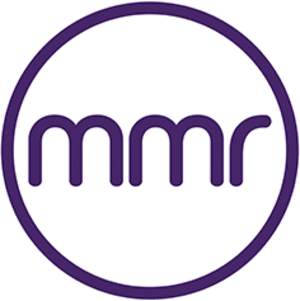Reflecting the gender spectrum
How many colours would you say there are? You could make the argument that there are a limited number of colours; for example, red, blue, green, and yellow.
But this might mean putting a lot of colours together that are actually quite distinct. Bluish green is very different to yellowish green, but you’d be calling both of them ‘green’. You could instead say there’s actually a much broader palette of colours, or spectrum.
Many people would also argue the same of gender. Indeed, growing awareness across society that gender can be seen as a spectrum rather than a binary is what prompted us to question how we record the gender of participants in our surveys.
On the whole, surveys – like society – have tended not to take into account gender identities which are different to either male or female. At nfpSynergy we specialise in working solely with not-for-profits, often carrying out research on complex and sensitive topics. Understanding how people describe themselves and their experiences with health issues, discrimination, poverty or homelessness is at the heart of what we do.
Therefore, we are especially committed to ensuring that research participants feel valued and recognised. So we faced a conundrum. Given the changes in the gender debate, did we need to revise our surveys to reflect this? After lots of discussion within the organisation and some desk research to see what others were doing, we made the decision to change. This is because we believe that asking broader gender questions by including options other than just male or female represents both ethical and best practice research.
We hope it will encourage participants to be more open in their responses if they feel comfortable with the research process itself. Implementing this was not straightforward and brought up some interesting issues, not only from a methodological point of view, but also in terms of attitudes of both our staff and clients.
Methodologically, we had to think about the impact this might have on quotas for projects where a nationally representative sample is required. This is of course not to say that gender minority groups aren’t representative of our society, but rather we simply don’t know to what extent because the Office of Statistics (ONS) only collects statistics on sex or gender classifications of male and female.
For us, however, the decision to broaden our gender question is very much about inclusion rather than numbers. In testing this question so far, we have not seen significant proportions of nonbinary gender/different identity participants such that it would mean reassessing our quotas, and we don’t necessarily expect to.
More important is that we continue working to improve the research experience for all participants. Meanwhile, we still reach our quotas for nationally representative numbers of male (including trans male) and female (including trans female).
One other challenge has been in terms of attitude, which is an issue that has come up with suppliers, clients, and respondents in slightly different ways.
Throughout our process we’ve tried to be totally transparent, providing information on why we feel this change is important. Some clients have chosen not to use the new question, and one or two suppliers have also been hesitant.
In a sense, the best we can do is simply make sure we provide adequate reasoning and that we’re on hand to answer any queries. It’s worth noting, however, that the majority have been positive about the change. In terms of respondents, we’ve had one or two less serious answers, but this has admittedly been very few and fairly harmless (for example: ‘different identify, please specify: human’).
Ultimately, we feel these issues have been relatively minor and haven’t contravened the quality of data collected. We’re confident that our question wording is both user-friendly and robust, having drawn on a wealth of research by both academics and practitioners when designing the question.
We’ve now also trialled our new gender question in research with the general public throughout 2016 and the first half of 2017 as part of our Charity Awareness Monitor and across varied projects, with great success.
Coincidentally, the Market Research Society (MRS) also issued revised guidelines on collecting data on sex and gender in January 2016, encouraging members to broaden their gender options beyond the binary of male and female, as we have done.
We feel this is a positive step and are happy that leading industry institutions see the need for this kind of inclusive approach to ensure research participants are able to self-identify in a way that feels appropriate to them.
Anna Wates is a researcher at nfpSynergy

We hope you enjoyed this article.
Research Live is published by MRS.
The Market Research Society (MRS) exists to promote and protect the research sector, showcasing how research delivers impact for businesses and government.
Members of MRS enjoy many benefits including tailoured policy guidance, discounts on training and conferences, and access to member-only content.
For example, there's an archive of winning case studies from over a decade of MRS Awards.
Find out more about the benefits of joining MRS here.











0 Comments